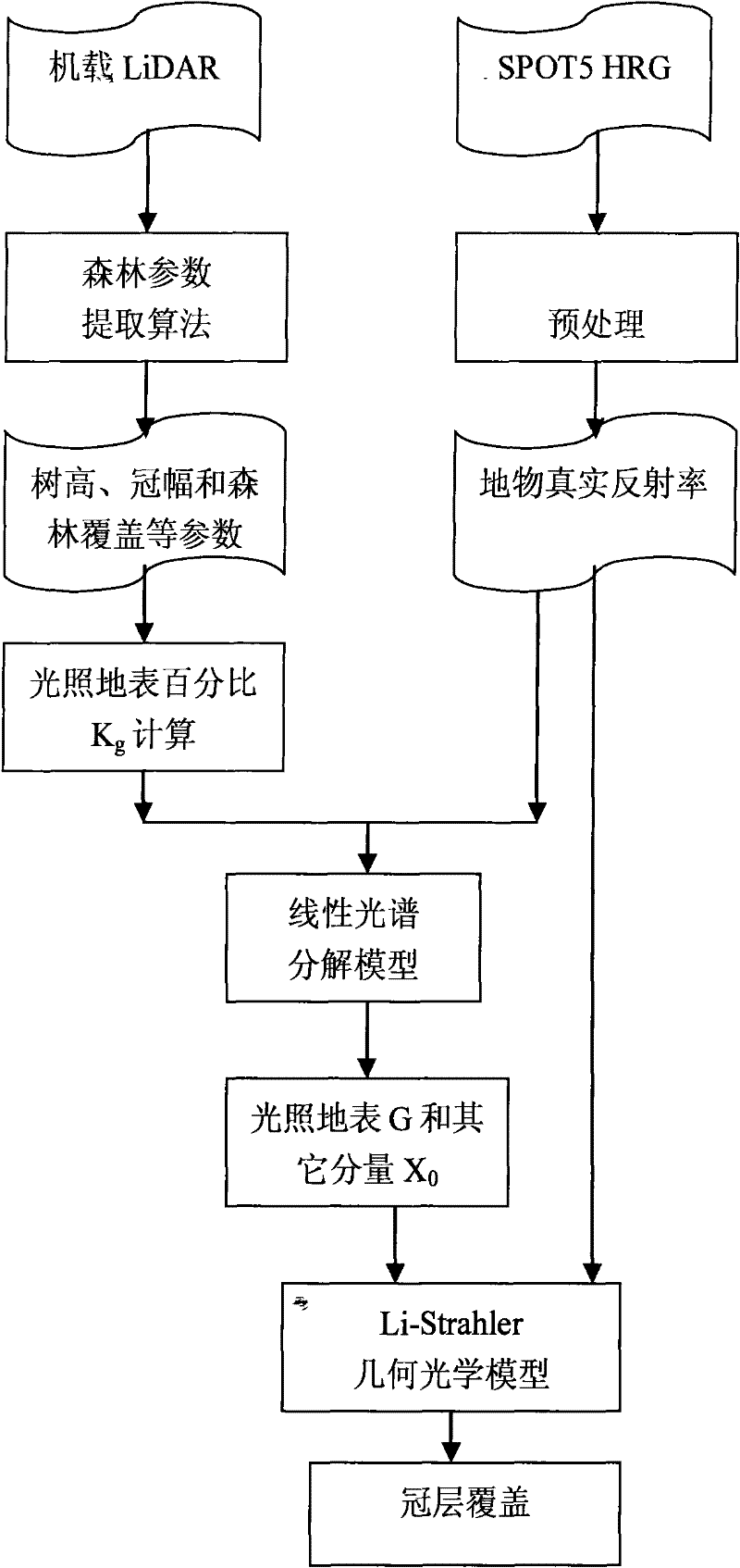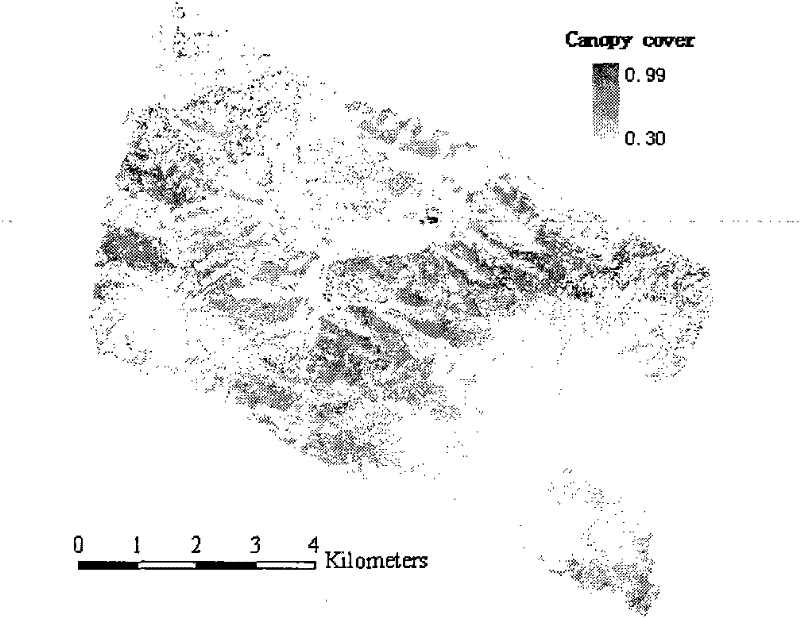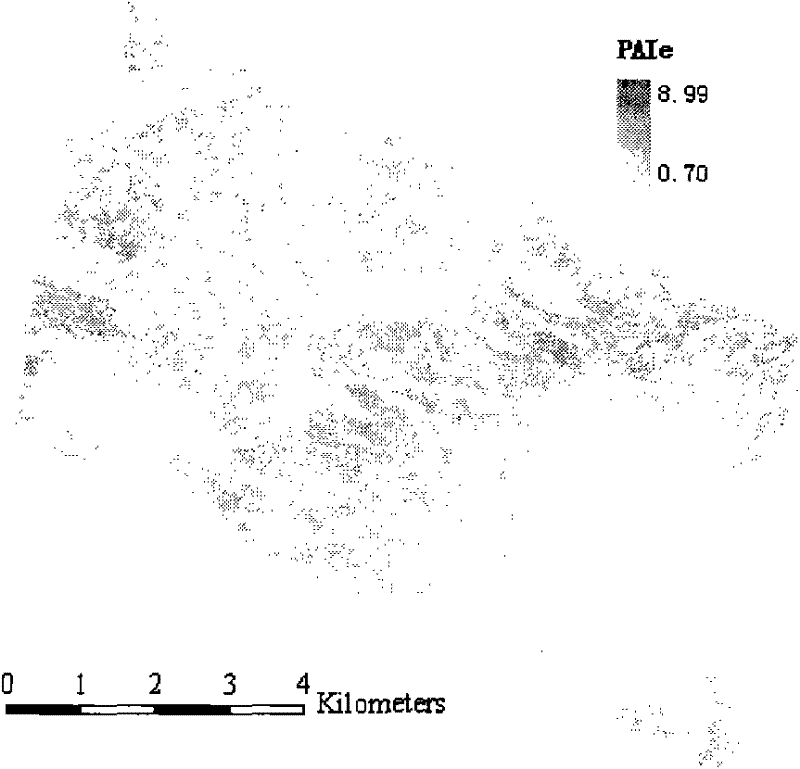An Active-Passive Synergistic Inversion Method for Forest Coverage and Effective Leaf Area Index
A technology of forest coverage and area index, applied in the field of inversion, can solve the problem of combining active and passive optical remote sensing data without explaining the physical mechanism, and achieve the effect of reducing uncertainty and improving accuracy
- Summary
- Abstract
- Description
- Claims
- Application Information
AI Technical Summary
Problems solved by technology
Method used
Image
Examples
Embodiment Construction
[0018] Inversion of the forest coverage and the effective leaf area index in the Heihe River Basin, Dayekou area, Gansu Province is an example below with the use of laser radar data (LiDAR) and optical remote sensing data (French SPOT-5 satellite data), and the inversion of the present invention is described in detail method.
[0019] refer to figure 1 , after extracting forest parameters from the airborne lidar and preprocessing the optical remote sensing data, the collaborative inversion starts.
[0020] The Li-Strahler geometric optics model (Li and Strahler, 1985; 1986; 1992) was developed for the inversion of tree crown size and tree density at the pixel scale on remote sensing images, and has been widely used in the inversion of vegetation structure parameters ( Franklin and Strahler, 1988; Franklin and Turner, 1992; Woodcock et al., 1997; Zeng et al., 2008; Li Xiaowen and Wang Jindi, 1995). The Li-Strahler geometric optics model describes the surface reflection signal...
PUM
 Login to View More
Login to View More Abstract
Description
Claims
Application Information
 Login to View More
Login to View More - R&D
- Intellectual Property
- Life Sciences
- Materials
- Tech Scout
- Unparalleled Data Quality
- Higher Quality Content
- 60% Fewer Hallucinations
Browse by: Latest US Patents, China's latest patents, Technical Efficacy Thesaurus, Application Domain, Technology Topic, Popular Technical Reports.
© 2025 PatSnap. All rights reserved.Legal|Privacy policy|Modern Slavery Act Transparency Statement|Sitemap|About US| Contact US: help@patsnap.com



